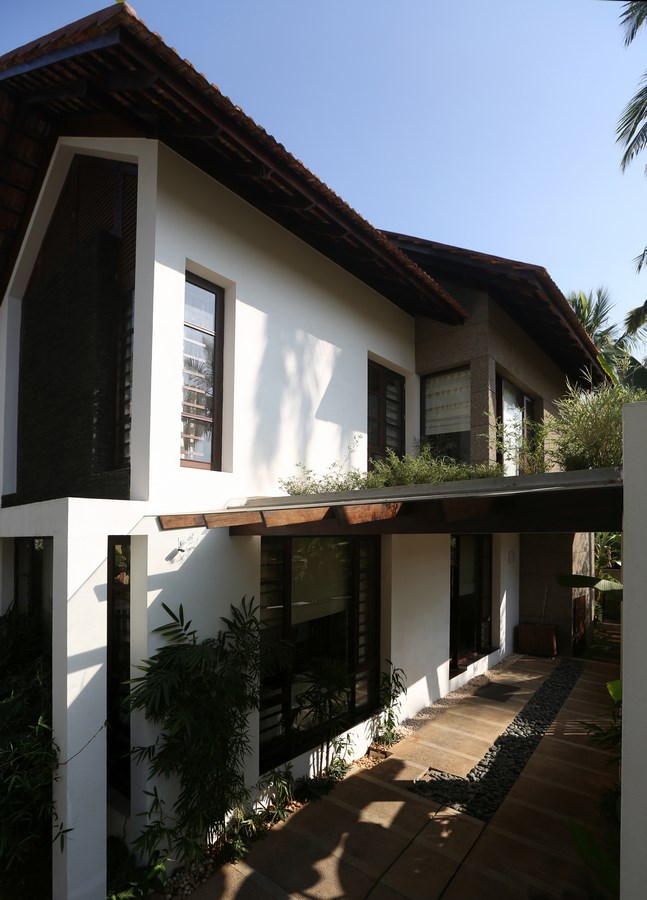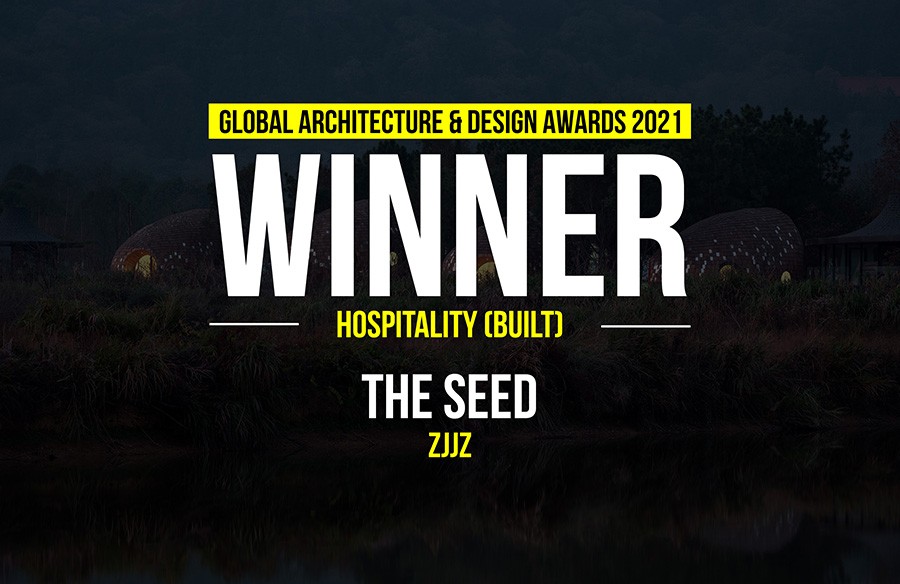 VIlla Sabina is sited in one of the prime locations of Trivandrum, the capital city of the tropical state Kerala, and like any other urban scenario, the availability of buildable land is a constraint and always a cause for concern. A contemporary residence embracing the concept of sustainability, Villa Sabina is a shining portrayal of solar powered residential occupancy and the design is of great contextual significance.
VIlla Sabina is sited in one of the prime locations of Trivandrum, the capital city of the tropical state Kerala, and like any other urban scenario, the availability of buildable land is a constraint and always a cause for concern. A contemporary residence embracing the concept of sustainability, Villa Sabina is a shining portrayal of solar powered residential occupancy and the design is of great contextual significance.
Project Name: Villa Sabina
Owner: Sabina Varghese
Architect: Ar. Varghese Panicker
Year of a completion: January, 2013
Cost: 95 Lakhs
Location: Trivandrum, Kerala
Area: 3020 sqft (280.6 m2)
Land Area: 6.5 cents
Photographers: Niby Thomas, Prathamesh Baskar
The Naalukettu concept is the strategic placement of a courtyard in the midst, outlined by functions on a single level. The open courtyard delivers the required ambient light, air changes, temperature regulation, ventilation etc, throughout the day to the spaces all around it. The central space forms the main activity core in a naalukettu.
Since building an entire residence on a single level synonymous to the traditional naalukettu was not a feasible option for the urban setting, in Villa Sabina, this concept is amended to better fit the site and its setting. In response to the site constraint, the courtyard, from being centrally located, is shifted to its perimeter, flanking the major functions in two levels, a contrast to the traditional single level. This two level design is justified in light to the current urban scenario where land availability and land value are highly influential variables.

Stairs to the upper floor is placed abutting the courtyard, such that the vertical core is overlaid on to the courtyard, thereby extending the courtyard vertically on a 3 dimensional space. This void indirectly acts as a medium for stack ventilation, ensuring air movement along with the desired openness.
Villa Sabina is thus a minimalist contemporary makeover of a truly traditional notion, without losing its indigenous character. The impulse to utilize more of nature in the design scheme thus corroborates the fact that the finest design is one that blends with and defers to its surrounding.
AMBIENCE
The color scheme used in the residence is earthen and complements the specialist lighting design approach, respecting the natural lighting. Variant shades of White are used to enhance the ambient light within the residence, thereby maintaining the continuity of spaces. The usage of putty coating for the interior walls is completely avoided, preventing unwanted heat generation. The walls are instead given a seamless textured trouvel finish.
Cutouts and openings are accompanied by green spaces with carefully chosen floral variants, which suits the décor and are easily manageable. Toilets have green courts, which redefines the conventional notion of an enclosed toilet. The same are sky-lit, thereby ensuring natural light along with privacy.
Wood is a material predominantly used in the design. Wooden floor panels and wood-cladded walls help keep the place cool, in addition to serving their purpose as an acoustic absorber. The stunning visual contrast created by the wood against the plain white variant textured walls enhances the aesthetic quality of the space.
ENERGY – EFFICIENCY
The strategic placement of openings and skylights ensures natural lighting and ventilation inside the residence throughout the day and it effectively compensates for the use of artificial sources. LED fixtures are used for artificial lighting. LED fixtures, though costlier compared to the ordinary counterparts, consume less power and are highly effective as they have higher life expectancy and low maintenance requirements. The fixtures were chosen based on a specialist lighting approach; diffused light sources providing for the ambient light thereby avoiding any direct to eye bright sources.
The entire residence is solar powered. The solar panels strategically positioned in the heat gaining areas of the first floor terrace generate enough power to make the building self-sufficient in terms of energy.
The old wooden roof is restored and used to suit the current design. The roof is also equipped with Polynum insulation with a marine ply backing which effectively keeps the heat generation and dampness at bay. The green roof over the car porch not only helps in temperature regulation but also amplifies the aesthetics.
RE-USED AND ALTERNATIVE MATERIALS
A major proportion of the materials used in construction were those harvested from the existing building, later customized for specific requirements. The positive qualities of reused building materials outweigh that of new materials in numerous ways. In this project, for instance, reused timber is a better choice as it is time-toughened and is naturally seasoned with use. It also helps in establishing the intentional worn finish for the floor panels. Treated soft wood is used for the furniture, which is an innovative alternative for the traditional hardwood usage. The treated soft wood is highly durable and the trees are fast growing and locally available in abundance.
Naalukettu : Traditional open courtyard houses common in South Indian vernacular.

VARGHESE PANICKER
A respected Architect and an artist par excellence, Ar. Varghese Panicker’s practical approach and eye for detail set him apart from the rest of the pack. He graduated in architecture in 1987 from the University of Kerala, with a first rank and Gold medal. He worked with Romi Khosla at The GRUP, New Delhi for four years, before forming Varghese Panicker Architects in 1992.
His architectural philosophy gives utmost importance to the needs and desires of the clients. The character of each design should relate to the individual style of the client, while also being sympathetic to the environment. Primary importance should be given to functional planning rather than form, although never compromising on aesthetics. He believes in the application of contemporary building materials to welcome and set trends in local architecture.
VPA has a long established International reputation, with projects in the Middle East, Africa and Asia. Their success can best be measured by how well the design solution meets the specific user program requirements – budgetary consideration, schedule limitations, functionality and quality. Varghese Panicker Architects regards design as the successful integration of all these requirements, along with a strong sense of functionality, cost efficiency, aesthetics and highest possible design standards.









